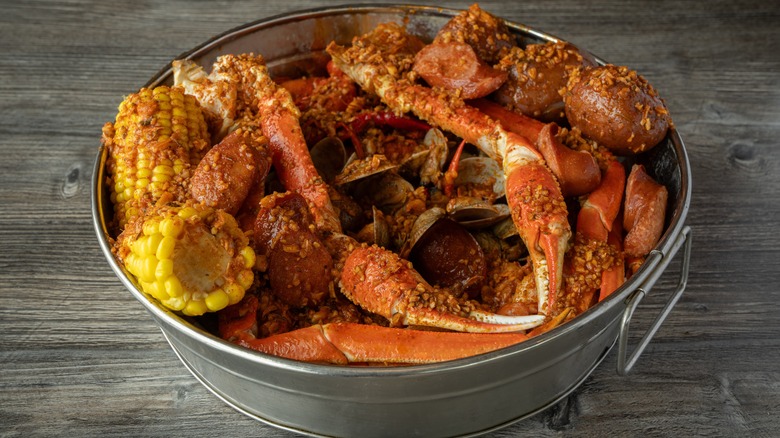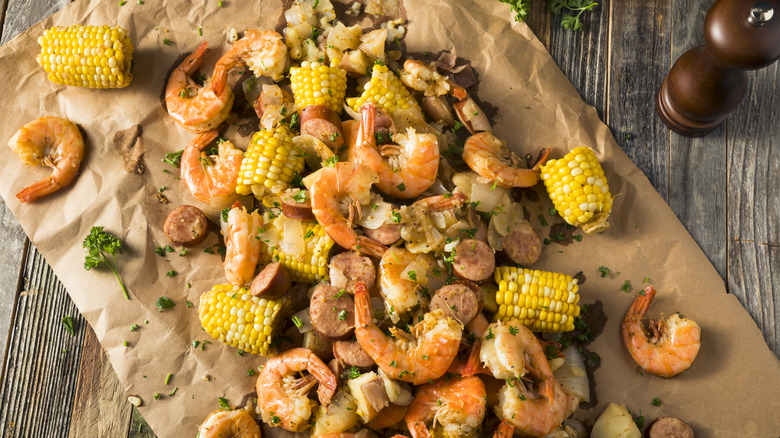The Easy-To-Make Mistake That's Ruining Your Seafood Boil
It's hard to beat fresh seafood — whether it's perfectly seared scallops or a lobster tail baked to perfection, seafood is in a league of its own when it comes to tender, melt-in-your-mouth texture. The downside, though, is that it can be delicate. That means the windows that separate perfectly cooked seafood from overcooked seafood are pretty small. Next time you want to host some friends for a seafood boil, remember one thing: Make sure you're not putting all of your crustaceans and mollusks in the pot at the same time.
Heartier options, such as crab claws and lobster, take longer to cook than something like scallops or shrimp. If you cook the scallops for the same amount of time as king crab legs, you'll end up with tough, chewy scallops that won't be any good to eat. Plus, most seafood boils contain a few non-seafood items, like corn, potatoes, and even sausage, all of which have very different cooking times from the other ingredients as well.
Don't cook your seafood boil's food all at once
You'll want the vegetables and meat in your boil to become tender prior to cooking the actual seafood. So, if you're adding something like onions or sausage, let them saute in a large pot prior to adding any water. This will cook down the onions and also give the sausage a good sear. Once you add water, then you can add the other non-seafood elements that you plan to cook in the water, such as potatoes and corn, as well as something to season the water, like Old Bay. You always want to add a little seasoning here because it's what gives the food that "seafood boil" style — zesty Cajun flavors are a popular choice, too.
From there, you can start to add the actual seafood, beginning with what takes the longest to cook. Depending on the size of shrimp, you might be able to add them alongside the crab and lobster (this is fine for jumbo shrimp), but time the boil carefully to know when to add any smaller items since they'll always need less time. Scallops should almost always be added last because they only need a little more than two minutes to cook, and if some of the water has evaporated out of the pot, scallops can be placed atop the other seafood and steamed for a few minutes, as long as there is a lid covering the pot to help cook them thoroughly.

